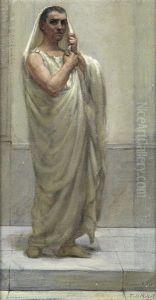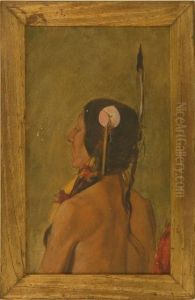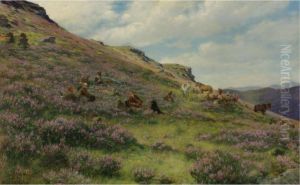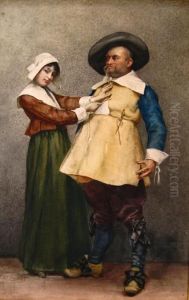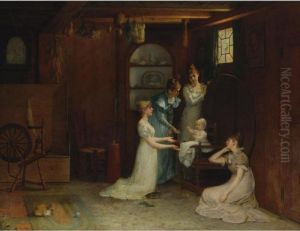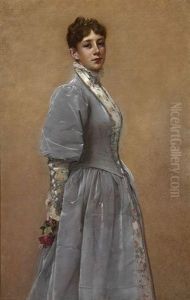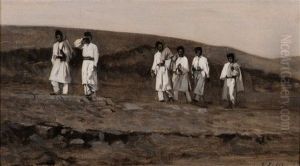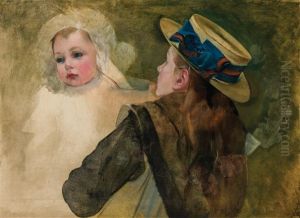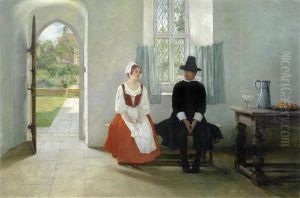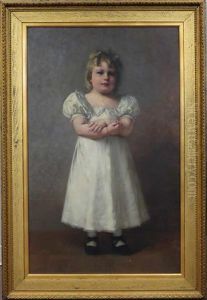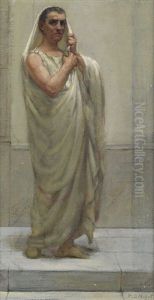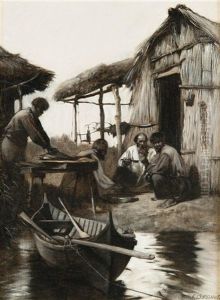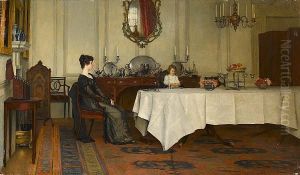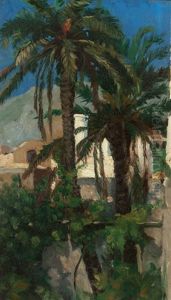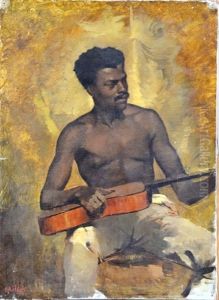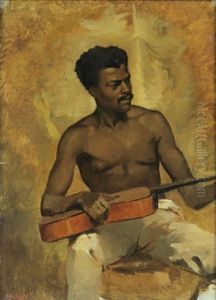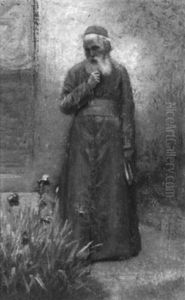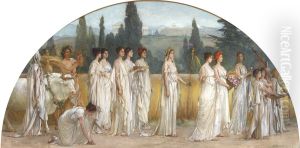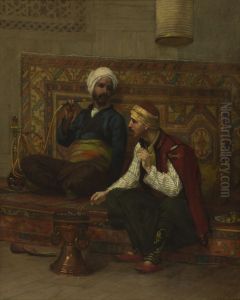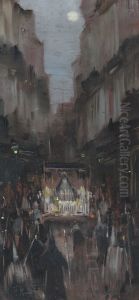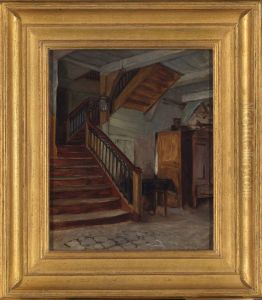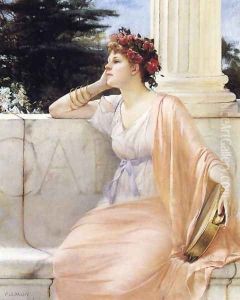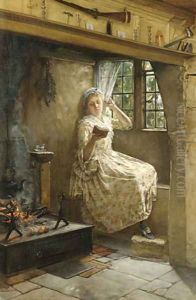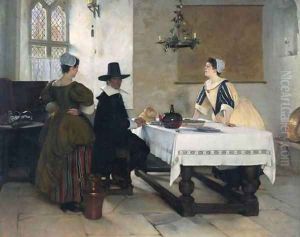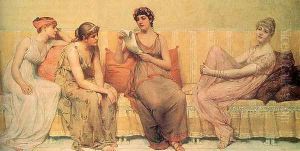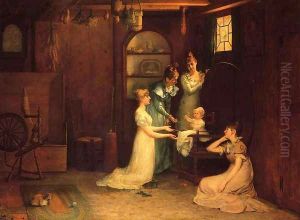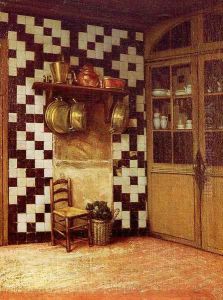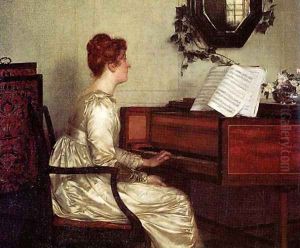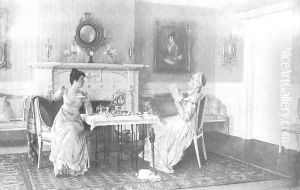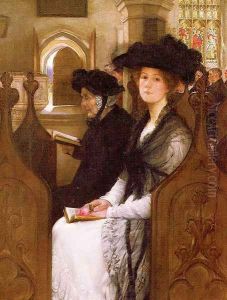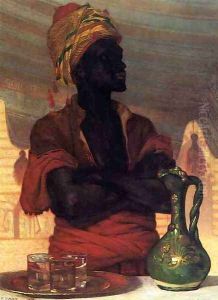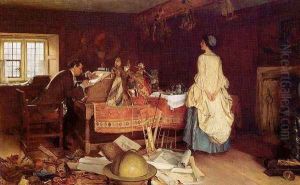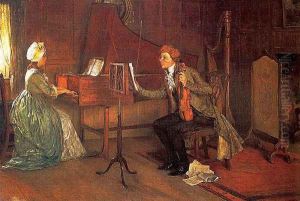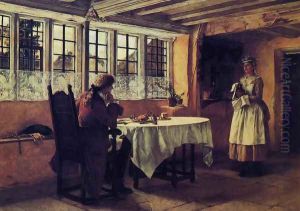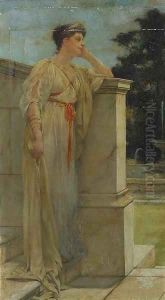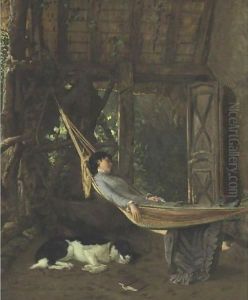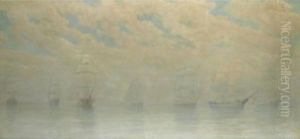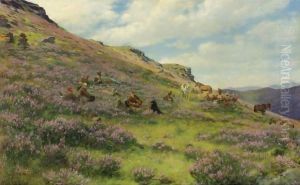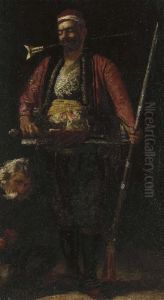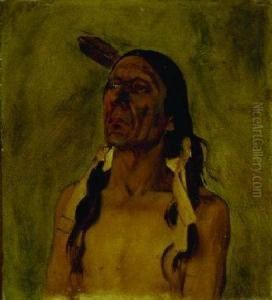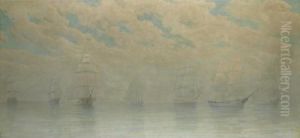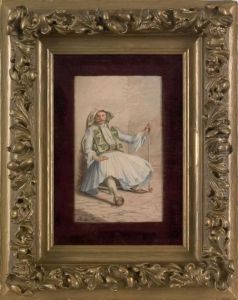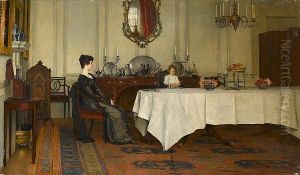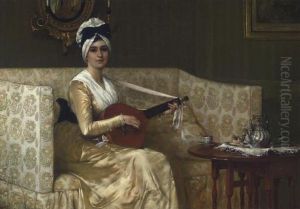Francis Davis Millet Paintings
Francis Davis Millet was an American painter, sculptor, and writer who played a significant role in the art world during the late 19th and early 20th centuries. Born on November 3, 1846, in Mattapoisett, Massachusetts, Millet was a man of diverse talents and interests. He attended Harvard University and later served as a drummer boy in the Union Army during the American Civil War. Following the war, he traveled to Europe to study art, enrolling at the Royal Academy of Fine Arts in Antwerp, Belgium, where he became the first American to win a silver medal.
Millet's career as an artist covered a wide range of mediums and subjects. He was known for his genre paintings, which often depicted scenes of everyday life, as well as for his murals and frescoes that graced the walls of public buildings and private residences. His works showed a strong classical influence and often included historical and allegorical themes. Millet was a member of the group of artists known as the 'American Pre-Raphaelites,' whose work emphasized fine detail, vibrant colors, and a morality derived from nature.
In addition to his painting, Millet was a prolific writer and journalist. He served as a correspondent for the Boston Advertiser during the Russo-Turkish War (1877-1878), where his written accounts received considerable attention. He also contributed to various magazines and wrote on art-related topics.
Millet's influence extended beyond his artistic creations; he was deeply involved in organizing art exhibitions, including the 1893 World's Columbian Exposition in Chicago. There, he served as the Director of Decorations, overseeing the creation and installation of numerous artworks.
Tragically, Francis Davis Millet's life came to a sudden end when he died in the sinking of the RMS Titanic on April 15, 1912. He was traveling to New York from England and was among the more than 1,500 people who lost their lives in one of the most infamous maritime disasters in history. His legacy, however, lives on through his art, his contributions to the development of American art, and his influence on the generations of artists who followed.
